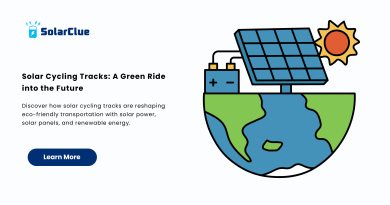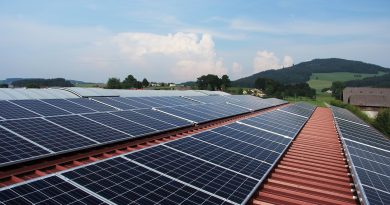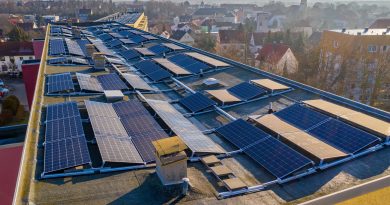When Were Solar Panels First Used?
The history of solar panels is a fascinating journey of scientific discovery, technological innovation, and global adoption. From the early experiments with solar energy to the widespread use of solar panels today, this timeline highlights key milestones, advancements, and challenges in the development of solar technology. It also explores the role of government policies, the impact of solar energy on society and the environment, and the future potential of this renewable energy source.
Table of Contents
- 1 The Early History of Solar Power and Its Pioneers
- 2 Key Milestones in Solar Panel Development
- 3 The Impact of Technological Advancements on Solar Panels
- 4 The Role of Government Policies and Incentives
- 5 The Challenges and Limitations Faced by the Solar Industry
- 6 The Future of Solar Power and Its Potential Impact on the World
- 7 Case Studies of Significant Solar Projects
- 8 The Impact of Solar Panels on Society and the Environment
- 9 Table: Key Milestones in the History of Solar Panels
- 10 Conclusion
The Early History of Solar Power and Its Pioneers
1839: The Photovoltaic Effect is Discovered
- Discovery by Edmond Becquerel: French physicist Edmond Becquerel discovered the photovoltaic effect, where light can generate electricity when exposed to certain materials, laying the groundwork for future solar technologies.
1873: Photoconductivity of Selenium is Discovered
- Willoughby Smith: The English engineer discovered the photoconductive properties of selenium, which later became crucial in the development of solar cells.
1883: The First Solar Cell is Created
- Charles Fritts: American inventor Charles Fritts developed the first solar cell using selenium, converting sunlight into electricity with an efficiency of less than 1%.
Key Milestones in Solar Panel Development
1954: The First Practical Silicon Solar Cell
- Bell Labs: Scientists at Bell Laboratories created the first practical silicon solar cell, achieving an efficiency of 6%. This breakthrough marked the beginning of modern solar panels.
1958: Solar Panels in Space
- Vanguard 1 Satellite: The Vanguard 1 satellite became the first spacecraft to use solar panels for power, demonstrating the potential of solar energy in space applications.
1973: The Oil Crisis and Renewed Interest in Solar Energy
- Energy Crisis: The oil crisis of 1973 spurred interest in alternative energy sources, including solar power, leading to increased research and investment.
1980: First Thin-Film Solar Cell
- University of Delaware: Researchers developed the first thin-film solar cell, which was more flexible and less expensive than traditional silicon cells.
The Impact of Technological Advancements on Solar Panels
1990s: Advancements in Efficiency and Manufacturing
- Cost Reductions: Technological advancements led to significant reductions in the cost of solar panels, making them more accessible to consumers.
- Improved Efficiency: Solar panel efficiency improved steadily, with commercial panels reaching over 15% efficiency.
2000s: Growth of the Solar Industry
- Global Adoption: Solar panel installations surged worldwide, driven by technological advancements, falling costs, and growing environmental awareness.
2010s: Emergence of Perovskite Solar Cells
- Perovskite Technology: Perovskite solar cells emerged as a promising alternative to silicon-based cells, offering higher efficiency and lower production costs.
The Role of Government Policies and Incentives
1978: The Public Utility Regulatory Policies Act (PURPA)
- United States: PURPA required utilities to purchase power from renewable sources, including solar, at competitive rates, encouraging the growth of the solar industry.
2000s: Feed-In Tariffs and Net Metering
- Global Policies: Many countries introduced feed-in tariffs and net metering policies, incentivizing the adoption of solar panels by allowing consumers to sell excess electricity back to the grid.
2015: The Paris Agreement
- Climate Action: The Paris Agreement emphasized the need for renewable energy sources like solar to combat climate change, leading to increased government support and investment.
The Challenges and Limitations Faced by the Solar Industry
High Initial Costs:
- Barrier to Entry: The early cost of solar panels was prohibitively high, limiting widespread adoption until technological advancements reduced prices.
Intermittency Issues:
- Reliability: Solar power’s dependency on sunlight made it less reliable than traditional energy sources, leading to challenges in integrating it into the energy grid.
Environmental Impact of Manufacturing:
- Resource-Intensive Production: The production of solar panels involves significant energy use and the extraction of raw materials, raising concerns about the environmental impact.
The Future of Solar Power and Its Potential Impact on the World
Technological Innovations:
- Next-Generation Solar Cells: Research into perovskite and tandem solar cells promises even higher efficiencies and lower costs, potentially revolutionizing the solar industry.
Global Adoption:
- Expanding Markets: As costs continue to fall, solar power is expected to become the dominant source of energy in many parts of the world, particularly in developing countries.
Integration with Smart Grids:
- Smart Energy Systems: The future of solar power involves integration with smart grids, energy storage solutions, and advanced forecasting technologies to optimize energy use.
Case Studies of Significant Solar Projects
2009: The World’s Largest Solar Farm – Topaz Solar Farm
- Location: California, USA
- Capacity: 550 MW
- Impact: Demonstrated the feasibility and economic viability of large-scale solar farms, setting a precedent for future projects.
2016: The Solar Impulse 2 Aircraft
- Achievement: The Solar Impulse 2 aircraft completed a round-the-world flight powered entirely by solar energy, showcasing the potential of solar power in aviation.
2020: Bhadla Solar Park
- Location: Rajasthan, India
- Capacity: 2,245 MW
- Impact: The world’s largest solar park, illustrating India’s commitment to renewable energy and its leadership in the global solar market.
The Impact of Solar Panels on Society and the Environment
Reduction in Greenhouse Gas Emissions:
- Climate Benefits: Solar panels have significantly reduced greenhouse gas emissions by providing a clean alternative to fossil fuels.
Energy Independence:
- Decentralization of Energy: Solar panels allow homeowners and businesses to generate their own electricity, reducing reliance on centralized power grids and enhancing energy security.
Job Creation:
- Economic Impact: The solar industry has created millions of jobs worldwide, from manufacturing to installation and maintenance.
Table: Key Milestones in the History of Solar Panels
| Year | Milestone | Description |
|---|---|---|
| 1839 | Discovery of Photovoltaic Effect | Edmond Becquerel discovers that light can generate electricity in certain materials. |
| 1883 | First Solar Cell | Charles Fritts creates the first solar cell using selenium, with very low efficiency. |
| 1954 | Silicon Solar Cell | Bell Labs develops the first practical silicon solar cell with 6% efficiency. |
| 1958 | Solar Panels in Space | Vanguard 1 satellite uses solar panels for power, marking the first space application. |
| 1973 | Oil Crisis | The energy crisis leads to renewed interest in alternative energy, including solar. |
| 1980 | First Thin-Film Solar Cell | University of Delaware researchers develop the first thin-film solar cell. |
| 1990s | Advancements in Efficiency | Solar panel efficiency and manufacturing processes improve, reducing costs. |
| 2009 | Topaz Solar Farm | The world’s largest solar farm at the time, with a capacity of 550 MW. |
| 2016 | Solar Impulse 2 | The first solar-powered aircraft to fly around the world. |
| 2020 | Bhadla Solar Park | World’s largest solar park, located in Rajasthan, India, with a capacity of 2,245 MW. |
Conclusion
The history of solar panels is a testament to human ingenuity and the relentless pursuit of sustainable energy. From the early experiments of the 19th century to the massive solar farms of today, the development of solar technology has transformed the global energy landscape. As we look to the future, continued advancements in solar technology and growing global adoption promise to further revolutionize how we generate and consume energy, making solar power a cornerstone of the world’s renewable energy future.
FAQ Section
1. Who discovered the photovoltaic effect?
The photovoltaic effect was discovered by French physicist Edmond Becquerel in 1839.
2. When were the first practical solar panels developed?
The first practical silicon solar panels were developed in 1954 by Bell Labs, achieving an efficiency of 6%.
3. How did the oil crisis of 1973 impact solar energy?
The oil crisis spurred renewed interest in alternative energy sources, including solar power, leading to increased research and investment.
4. What are perovskite solar cells?
Perovskite solar cells are a new type of solar technology that offers higher efficiency and lower production costs compared to traditional silicon cells.
5. What is the significance of Bhadla Solar Park?
Bhadla Solar Park in Rajasthan, India, is the world’s largest solar park, demonstrating India’s leadership in solar energy and commitment to renewable power.



